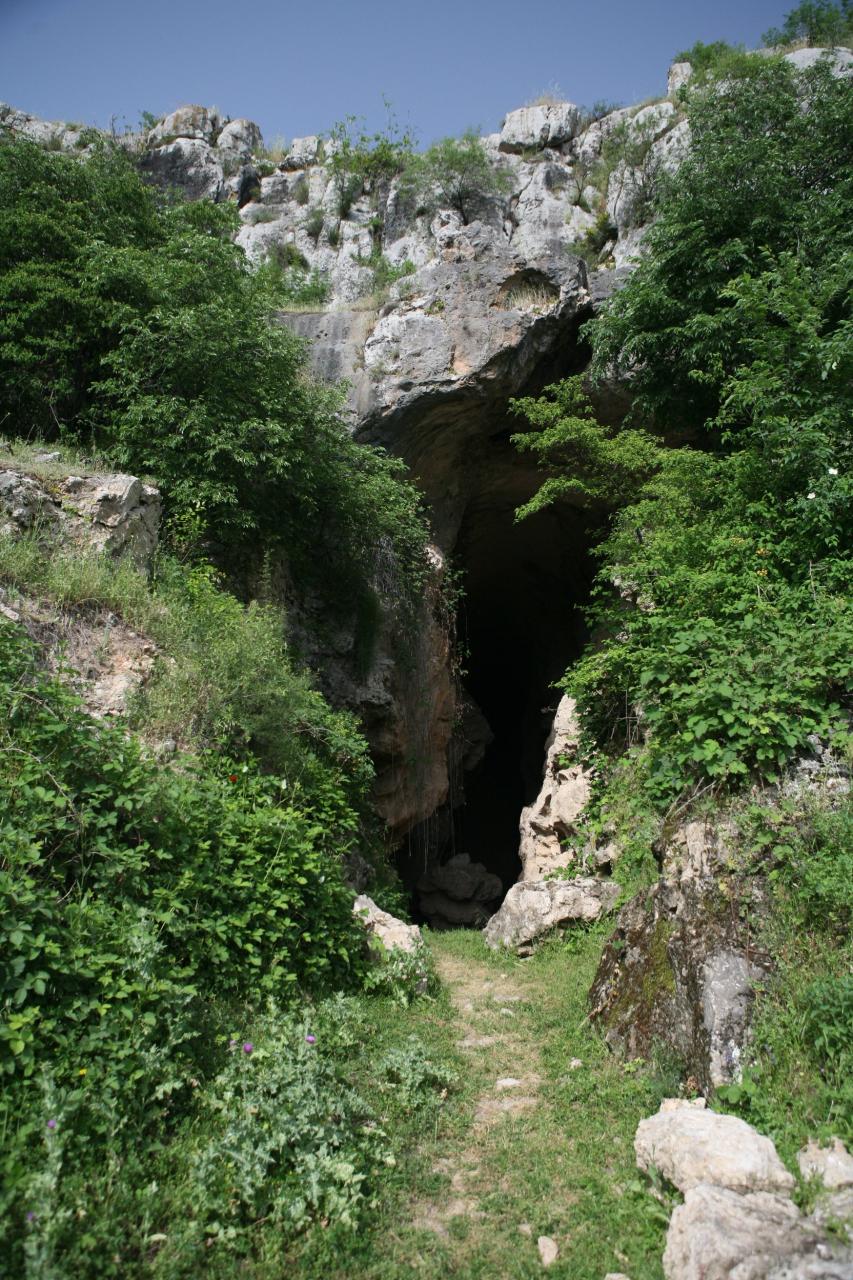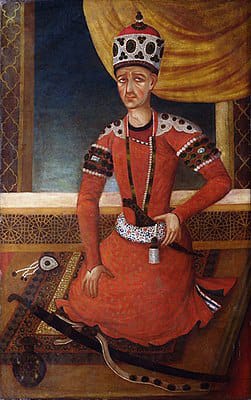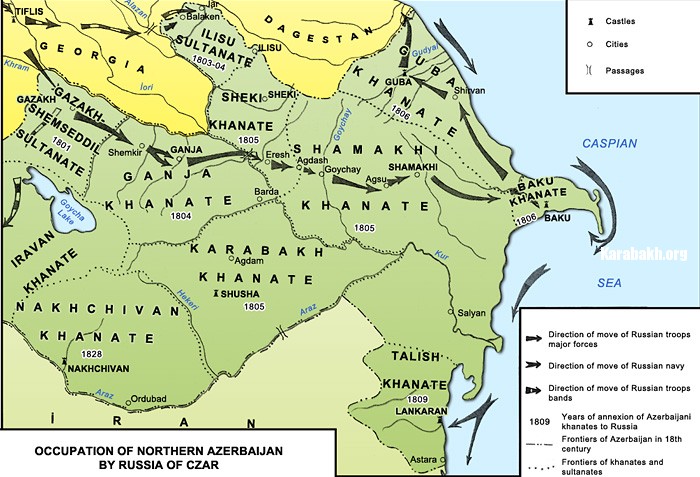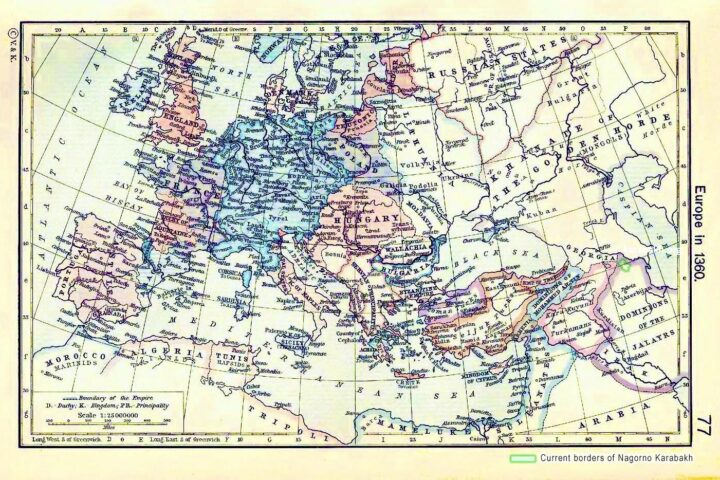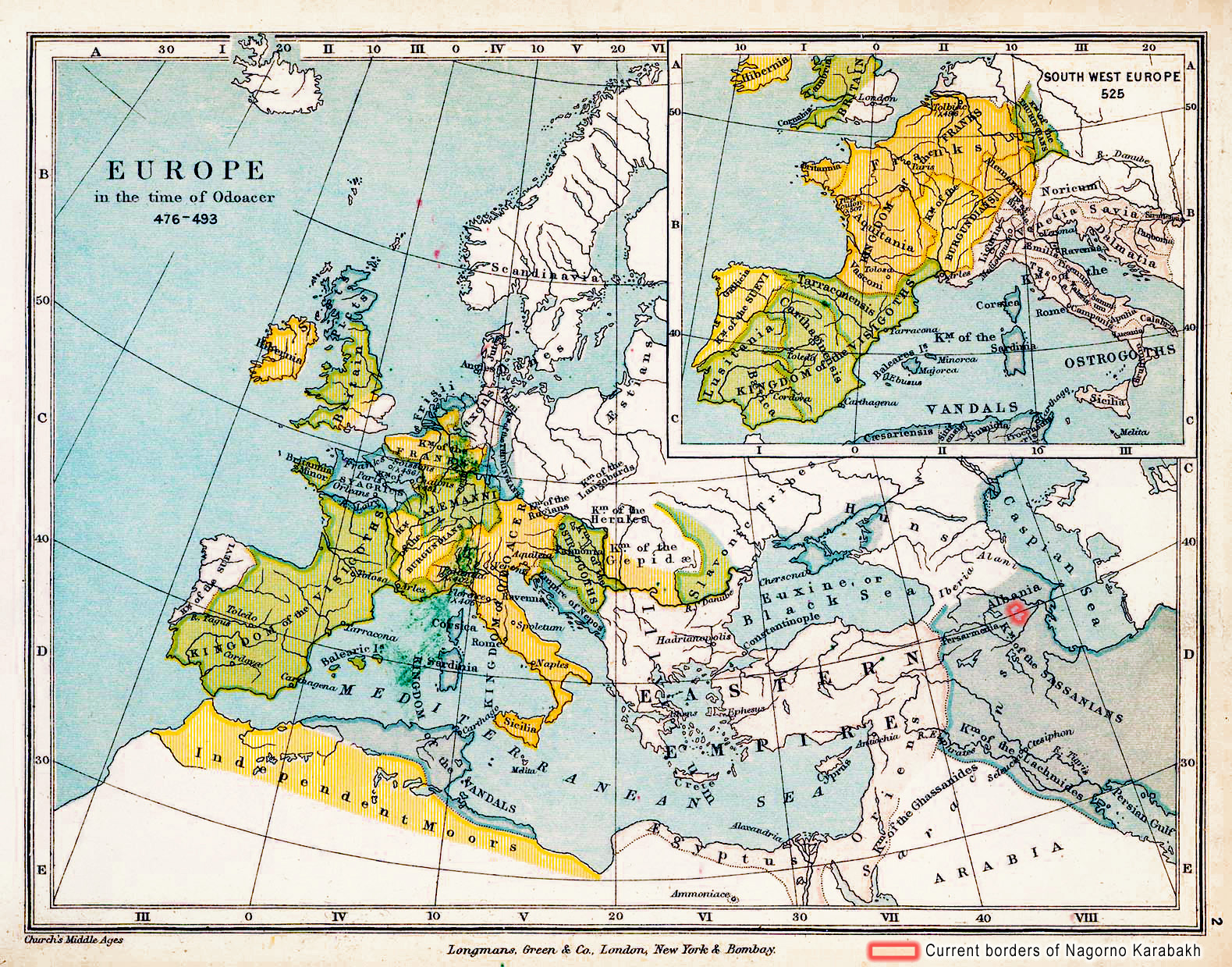Karabakh region was the most ancient place of stay of the human being in the territory of the former Soviet Union. Uzerliktapa – the most ancient city type settlement in the territory of the Caucasus also situated here.
Karabakh is a historical region extending from the highland part of the Lesser Caucasus in Azerbaijan up to the country between two – the Kura and the Araz rivers. In various periods of history the territory of Karabakh has been referred to in various ways: the Country of Gargars, Uti, Orkhistena, Artsakh, Khachin and etc. The name Karabakh is mentioned in sources beginning from XII c.
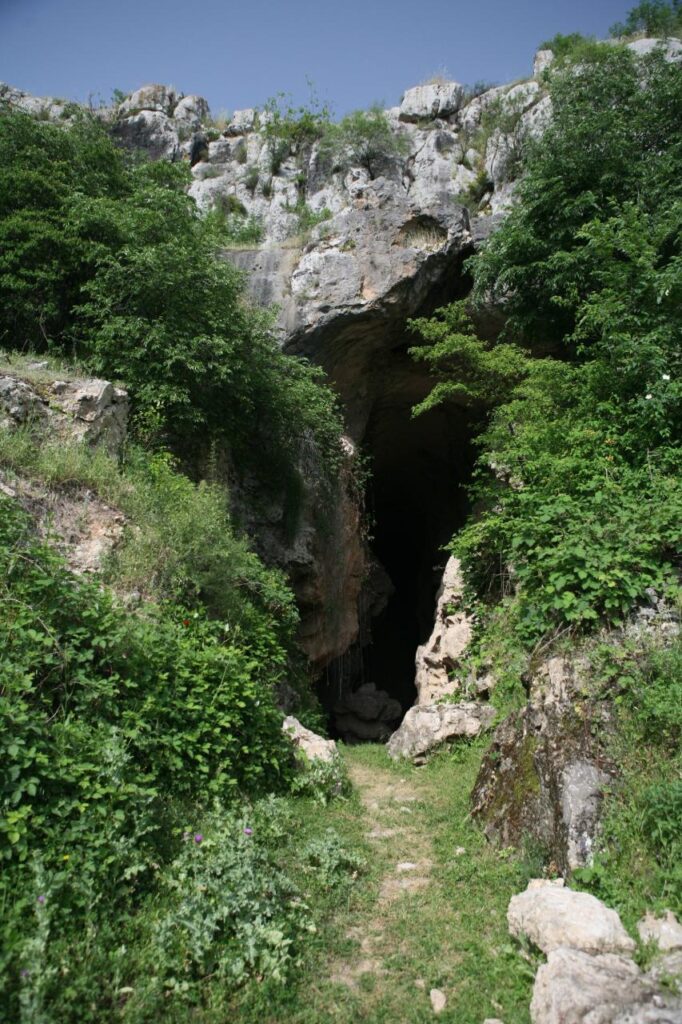
Karabakh is one of the most ancient centers of civilization. There are many reasons to believe, that this territory, together with the Mediterranean and Northern Africa, was within the zone of the ancestral home of mankind, that this region was among the firsts, where the process of evolution of the human, as a biosocial and social being took place.1 1,5-2 million years ago the climate of the region was warm and moderately humid. This zone had very rich flora and fauna. Namely in Karabakh in 1969 in the cave of Azikh situated near the present town of Fuzuli, archeologists have found the most ancient traces of life and activity of the human being. The Azikh cave was the most ancient place of stay of the human being in the territory of the former Soviet Union. Archeologists found here the famous fragment of a jaw of a woman living approx. 350-400 thousand years ago.
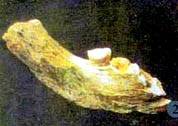
Named Azikhantrope, the Azikh human, who is defined as belonging to preneandertals, has early apprehended fire, was able to save it for a long period of time, used stone instruments for work and engaged in hunting. No doubt that the founders of the Azikh (also known as Kuruchay) culture already had intelligence and forming speech, and also some elements of spiritual culture. The hiding-place with the bear skulls, «the cult of the skull» in Azikh, points to the presence of the most elementary notions about religion among the inhabitants of this zone. The cuts on one of the skulls, undoubtedly being accounting elements, and even the artwork, testify about some natural supervisions of the inhabitants of Azikh. Already more than 300 thousand years ago the Azikhantropes make the first attempts to construct dwellings for themselves.
The Mustier Period (120-30 thousand years ago) is presented rather well in the Azikh and Taglar caves. A Mustier person had already comprehended the essence of the color and of the color parities. In the inventory of the Taglar cave archeologists found many stores for preparing work instruments and all of these findings are notable for their color gamma.
The Eneolitic period (VI – IV thousand years B.C.) is notable with the establishment of the ancient land planting and cattle breeding economy and settled agriculture in Karabakh.

The Bronze Age is, primarily, characterized by the development of the metal processing with wide use of local ores. Apparently, there was organized an independent metallurgical manufacture in this territory. Crafts developed. The ceramic manufacture occupied an important place. In the mountainous areas semi-nomadic, distant-pasture cattle breeding began to develop and constituted one of the main branches of the economy of this area. In the same time, agriculture intensively developed in the lowland areas, covering the needs of all inhabitants of this region in agricultural production. Thus, the mountainous and lowland parts of Karabakh were closely linked with each other.
Culture of Karabakh of the Bronze and Early Iron Ages is well reflected in the burial monuments. This culture, more known as Khojaly-Gedabey culture, began from II – I Millennium BC. Tumuli (kurgans) of the Khojaly-Gedabey culture, similar to other tumuli in Azerbaijan, are notable with their rich inventories. The deceased are buried with a rather magnificent funeral ritual, with killed slaves, warriors and wives of the leaders of the tribes. The inventory of the tumuli contains working tools and weapons made of stone and metal, ornaments made of gold and other valuable metals, and also a lot of ceramics. Potters of the Khojaly-Gedabey culture have reached a high level of skill in work with ceramics.
The most ancient city type settlement in the territory of the Caucasus – Uzerliktapa also belongs to the Khojaly-Gedabey culture. Uzerliktapa is located on a hill 6-7 m high near the present city of Aghdam.2 The town was settled 3-4 thousand years ago. It is notable that, like in all over Azerbaijan, ancient inhabitants of Karabakh, including Uzerliktapa, established their settlements on the heights. And apparently, it pursued purely military- defense purposes. During tribal wars inhabitants of Uzerliktapa quickly could discover the enemy and took defensive measures. A brick wall led the settlement round. Furthermore, there was dug a ditch around the hill, on which the settlement was situated, and in case of danger, this ditch was filled with water making Uzerliktapa something like an island. Archeological digs have discovered, that a three-meter deep cultural layer was formed in Uzerliktapa throughout the centuries. According to that layer the scientists found out, that people lived in Uzerliktapa for approximately 2 thousand years.
Like in other settlements of the Khojaly-Gedabey culture, ceramic art had achieved a high level of development in Uzerliktapa. But the most important was that people in Uzerliktapa had learned to make vegetative paints, which they used to paint the ceramic products.
In Uzerliktapa archeologists have also found an idol of a woman. This find allows us to understand the religious notions of that time in the region. In general, idols of women make the majority among the idols found in Azerbaijan. Mother was a symbol of the continuation of the mankind and also was considered to be the embodiment of the beginning of life.
- About the Azikh cave, look for further: Gerasimov I.P., Velichko A.A. and others «Drevneyshiye lyudi v Yevrope I usloviya ix obitaniya» (Most ancient humans in Europe and their the conditions of their inhabitance) The Bulletin of the Academy of Sciences of USSR, 1981, No 10, p.23 (in Russian); also look I. Aliyev «Karabakh in ancient times», History of Azerbaijan Based on the Documents and Publications (from now on the Documents and Publications), Baku 1990 (in Russian);
- For more details about Uzerliktapa look: Ismailov G.S., Danielyan O.A. «Arxeologicheskiye pamyatniki mezhdurechya Kuruchai I Kendelenchai» (Archeological monuments of the land between the two rivers of Kuruchai and Kendelenchai) Baku 1985 (in Russian) also: Kushnareva K.Kh. «Poseleniya epoxi bronzi na xolme Uzerliktepe okolo Agdama» (The Bronze Age settlement on the Uzerliktapa hill near Aghdam) vv. I-II, Moscow 1959, 1965 (in Russian);
